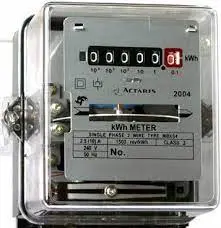
Introduction
Tamper proof energy meters are devices that measure the amount of electrical energy consumed by a customer and prevent any unauthorized manipulation or interference. Tampering with energy meters is a common problem that causes revenue loss for utility companies and affects the accuracy and reliability of the power grid. In this blog post, we will explore some of the New Technologies Used to Design Tamper-Proof Energy Meter.
Components Used In Tamper-Proof Energy Meter

One of the key components of a tamper proof energy meter is the microcontroller, which is the brain of the device. The microcontroller performs various functions, such as sampling the voltage and current signals, calculating the active and reactive energy, detecting and logging any tamper events, communicating with external devices, and displaying the meter data. The microcontroller should have features that enable it to detect and protect against different types of tampering, such as:
- Magnetic interference: Some customers may use strong magnets to slow down or stop the rotation of the meter disk or to distort the magnetic field of the current transformer. The microcontroller should have a built-in magnetic sensor or an external hall-effect sensor to sense any abnormal magnetic field and trigger an alarm or a power-down mode.
- Neutral line cut: Some customers may cut or bypass the neutral line to reduce the apparent power consumption or to avoid detection by the meter. The microcontroller should have a dedicated neutral line input or a differential input to measure the voltage difference between the live and neutral lines and detect any imbalance or discontinuity.
- Reverse current flow: Some customers may reverse the polarity of the meter terminals or connect an external power source to feed back energy to the grid. The microcontroller should have a bidirectional current measurement capability or a reverse current detection circuit to identify any negative power flow and record it as a tamper event.
- Meter cover opening: Some customers may open the meter cover to access the internal components or to insert foreign objects. The microcontroller should have a tamper switch or a light sensor to detect any change in the meter status or ambient light and generate an alert or a lockout signal.
RELATED
The Technology That Determines World Power: Semiconductors
Memory

Another important component of a tamper proof energy meter is the memory, which stores the meter data, such as energy consumption, tariff information, tamper logs, etc. The mmory should be secure and reliable, meaning that it should prevent any unauthorized access, modification, or deletion of the data and ensure that the data is preserved even in case of power outage or battery failure. Some of the technologies that are used to enhance the security and reliability of the memory are:
- Encryption: The memory data should be encrypted using a strong algorithm and a unique key that is stored in a secure location within the microcontroller. This will prevent any unauthorized reading or writing of the data by external devices or hackers.
- Authentication: The memory should have an authentication mechanism that verifies the identity and integrity of the microcontroller before allowing any data transfer. This will prevent any spoofing or cloning of the meter by replacing or copying the microcontroller.
- Non-volatile memory: The memory should be non-volatile, meaning that it can retain its data even without power supply. This will ensure that no data is lost or corrupted in case of power outage or battery failure. Non-volatile memory can be either flash memory, which can be electrically erased and programmed, or EEPROM (electrically erasable programmable read-only memory), which can be electrically erased and written in small blocks.
Communication Interface

A third essential component of a tamper proof energy meter is the communication interface, which enables the meter to transmit and receive data from external devices, such as handheld readers, smart phones, computers, etc. The communication interface should be fast, reliable, and secure, meaning that it should support high data rates, low error rates, and high encryption standards. Some of the technologies that are used to implement different types of communication interfaces are:
- Optical port: The optical port is a common communication interface that uses infrared light to transfer data between the meter and an optical probe. The optical port is simple, cheap, and easy to use, but it has some limitations, such as low data rate, short range, line-of-sight requirement, and susceptibility to ambient light interference.
- Wireless module: The wireless module is a modern communication interface that uses radio frequency (RF) signals to transfer data between the meter and a wireless device. The wireless module can support various wireless protocols, such as Bluetooth, Wi-Fi, ZigBee, etc. The wireless module is fast, convenient, and flexible, but it has some challenges, such as high power consumption, security risks, and regulatory compliance.
- Power line communication (PLC): The PLC is an advanced communication interface that uses the existing power lines as a medium to transfer data between the meter and a central station. The PLC can support high data rates over long distances without requiring additional wiring or infrastructure. The PLC is efficient, robust, and scalable, but it has some difficulties, such as noise interference, signal attenuation, and synchronization issues.
Conclusion
Tamper proof energy meters are devices that use various technologies to measure the electrical energy consumption and prevent any unauthorized manipulation or interference. Some of the new technologies that are used to design and implement tamper proof energy meters are microcontrollers with tamper detection and protection features, secure and reliable memory devices, and fast, reliable, and secure communication interfaces. These technologies help to improve the accuracy, reliability, and security of the energy metering system and to reduce the revenue loss and power theft. For more information about tamper proof energy meters, you can refer to the following sources:


